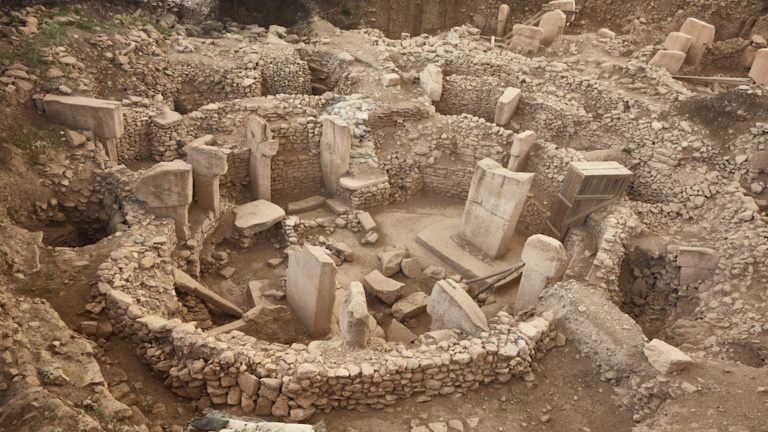The Enigma of Stonehenge: Unraveling Britain's Prehistoric Mystery
Nestled on the windswept plains of Wiltshire, England, Stonehenge has stood as a silent guardian of Britain's prehistoric past. An enigma carved in stone, it is a structure that has puzzled archaeologists and historians for centuries. What was its purpose? Who built it, and how did they achieve such a monumental undertaking with the primitive tools of their age? This article peels back the layers of time to explore the enduring mystery of Stonehenge.
From the earliest phases of construction around 3000 BCE to its completion in 1600 BCE, the evolution of Stonehenge mirrors a parallel progression in Neolithic and Bronze Age societies. Initially, the area that would become Stonehenge served as a burial ground, as evidenced by the discovery of human cremation remains dating back to its earliest years. It wasn't until approximately 2500 BCE that the site began to take on the form we recognize today, with the erection of the iconic sarsen stones.
The sarsen stones, massive blocks weighing up to 25 tons each, form the outer circle and inner horseshoe shapes that captivate visitors. Nearby, smaller bluestones—transported from the Preseli Hills in Wales, some 150 miles away—underscore the determination and ingenuity of the builders. But how these stones were moved remains a topic of debate and speculation. Theories range from log-rolling systems to water transport via rivers and rafts, but no definitive evidence has sealed the case.
Above the physical challenges of construction, Stonehenge's astronomical alignments reveal insights into the knowledge and beliefs of its builders. The Heel Stone and the Slaughter Stone, set outside the main circle, align with the sunrise of the summer solstice and sunset of the winter solstice, respectively. This suggests not only an understanding of the solar year but also the importance of celestial events in the builders' culture—perhaps tied to agricultural cycles, social ceremonies, or religious practices.
Yet, it is the human element that makes Stonehenge's history truly fascinating. As the British Isles transitioned from a landscape dotted by hunter-gatherer tribes to one marked by farming communities, Stonehenge may have served as a unifying landmark. Some scholars posit that it functioned as an ancestral shrine or a place of healing. Others propose it was a ceremonial site for a sun-worshipping cult or an elaborate prehistoric calendar.
Archaeological excavations around Stonehenge have peeled back some layers of its history. Discoveries such as the nearby settlement of Durrington Walls, once home to hundreds of people, indicate that Stonehenge was part of a much larger religious and ceremonial landscape. The numerous burial mounds and barrows that dot the surrounding countryside further attest to the area's significance in ancient Britain.
The labor invested in Stonehenge also reflects its importance to the people who built it. It is conceivable that communities from across a wide region came together, pooling their resources and manpower to erect the stones piece by piece over generations. This notion of communal effort in a landscape of scattered and autonomous communities suggests a level of organization and social structure that is often underestimated for prehistoric societies.
Despite continued research and technological advancements, such as ground-penetrating radar and sophisticated dating methods, many secrets of Stonehenge remain buried in time. Each new discovery contributes to the complex narrative of Stonehenge, nudging us closer to understanding the motivation and methods behind this prehistoric marvel. However, the question lingers—can we ever fully unravel the purpose of Stonehenge, or will it forever keep some of its mysteries tightly locked within its massive stone framework?
As the sun casts long shadows between the sarsens and the British countryside prepares for another nightfall, those who visit the site can't help but feel a connection to the distant past. It is a place that transcends history, reaching into the realm of the sacred and the eternal. Stonehenge stands as a testament to human ingenuity and spiritual aspiration, challenging us to ponder the tireless quest of our ancestors to comprehend their place in the universe.
As historians and archaeologists continue their diligent work, the legacy of Stonehenge is far from complete. The journey to decode its stone-laden messages is ongoing, and with each layer that we peel back, we contribute another verse to the enduring epic of human history.
The Architects of Stonehenge: A Closer Look at Neolithic Society
Venturing deeper into the heart of Stonehenge's origins, we must turn our gaze to the Neolithic people themselves, the mysterious architects of this prehistoric monument. Who were these communities that flourished across the landscapes of ancient Britain, and what drove them to invest such extraordinary effort into the creation of Stonehenge?
The Neolithic, or New Stone Age, was marked by profound transformations in human societies, not least in Britain. People shifted from a nomadic hunter-gatherer existence to a more settled way of life based on agriculture. With this came the development of new technologies, the domestication of animals, and the establishment of permanent settlements. It was an era of innovation, where pottery and woven textiles emerged, alongside the construction of megalithic structures.
The Neolithic inhabitants of Britain were pioneers of farming, introducing crops like wheat and barley and raising livestock such as pigs, sheep, and cattle. Forests were cleared to make way for arable land, and the landscape was permanently altered. Settlements featured circular timber houses with central hearths, indicative of communal living and a social structure that prioritized group cohesion.
The inception of Stonehenge coincided with these societal advancements. Possibly, the monument was a symbol of unity, drawing disparate groups together for shared religious beliefs or social obligations. The builders were likely not a single tribe but a collective of various groups, perhaps participating in construction as part of a broader cultural alliance.
Recent archaeological explorations have shed light on the intricate networks these Neolithic people maintained across the British Isles. The stones themselves serve as evidence of these connections, with the bluestones originating from Wales and the sarsens likely sourced from the nearby Marlborough Downs. The effort to transport these stones, especially the bluestones over such vast distances, suggests a level of cooperation and ceremonial significance beyond the quotidian pursuits of survival.
Aside from its construction, the usage of Stonehenge also offers insights into Neolithic life. Bones, pottery fragments, and tools found during various digs point to feasting and possibly sacrificial offerings, hinting at the ceremonial or religious aspects of Stonehenge. Analysis of pig teeth suggested that many animals were brought to the site from great distances, specifically for large midwinter feasts, reinforcing the idea of Stonehenge as a gathering place.
Moreover, Stonehenge's role might have evolved over the centuries. As the axes of the stones align with solstice events, it's plausible the site's significance was related to an agricultural calendar. Yet, it might have held different meanings for different groups or even transitioned its purpose from generation to generation, adapting to the shifting dynamics of Neolithic society.
In parallel to the evolving theories about Stonehenge's function and importance, modern techniques in archaeology have allowed historians to paint a clearer picture of the Neolithic people. Isotopic analysis of remains suggests a diverse diet that changed with the seasons. Additionally, DNA studies reveal that these early inhabitants were genetically distinct from the hunter-gatherers that preceded them, pointing to a wave of migration from continental Europe that brought new cultures and ideas.
Yet, for all the advances in understanding the Neolithic era and Stonehenge, the monument also reminds us of the immense gaps in our knowledge. We have yet to uncover any written records from the people of this time, leaving their thoughts, languages, and many aspects of their cultures shrouded in mystery.
While Stonehenge continues to stand as an enduring symbol of Britain's prehistoric heritage, it also represents the fundamental human yearning for connection—both to the cosmos and to one another. Its true origins and meanings might never be fully known, but Stonehenge remains a place of wonder and inspiration, prompting contemplation of our shared human journey from our most distant ancestors to the present.
As the solstices continue to draw crowds and the stones persist through the centuries, Stonehenge serves as a timeless sentinel, a bridge to the past, and a monument to the enduring pursuit of understanding our place in the continuum of history. With each season, its whispers of ancient secrets and lost knowledge compel us forward in the quest to unravel the tapestry of human civilization and the enigma of this legendary monument.







Comments